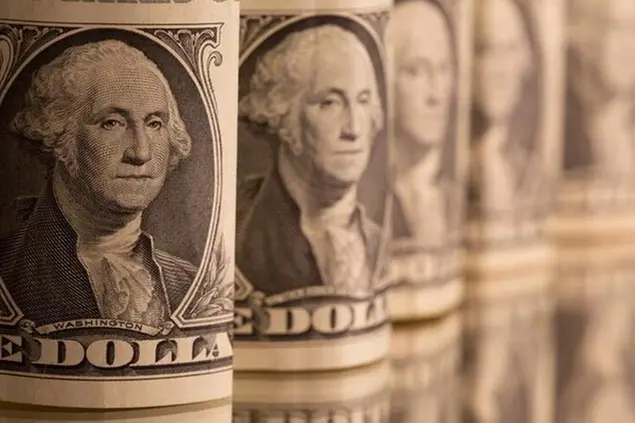PHOTO
The dollar rebounded on Wednesday after a recent run of declines that pushed it to its weakest in more than a year, as traders awaited economic data that could set the tone for the U.S. Federal Reserve's September policy meeting.
Sharp bouts of volatility hit the foreign exchange markets this month as worries around a potential U.S. recession and hawkish signals from the Bank of Japan (BOJ) hammered the dollar and sent other major currencies soaring.
The dollar index, which measures the greenback against a basket of currencies, rose 0.42% to 100.96 on Wednesday, but looked on course for its biggest monthly drop since November 2023.
It reached a 13-month low of 100.51 in the previous session, pressured by a sharp reevaluation of expectations for Fed rate cuts.
"It's quite clear that the market has priced in close to a 3% terminal rate, and bear in mind that rates are over 5% right now. A lot of this has been priced in quite quickly over the recent period," said Ed Hutchings, head of rates at Aviva Investors.
"There could be a bit of a pause for the dollar (declines) and room for yields to potentially move higher."
Traders also awaited earnings from AI chip giant Nvidia , which has sparked a frenzy on Wall Street and beyond in recent years. The dollar has been sensitive to moves in equity markets this year.
Investors are unanimous in bets that the Fed will begin cutting interest rates next month following Chair Jerome Powell's dovish tilt last week, with the debate now centred on whether or not it will be a super-sized 50-basis point cut.
The current pricing sits at a 35% chance for the larger cut, up from 29% a week ago, according to the CME Group's FedWatch Tool. Markets see just over 100 basis points of easing by the end of the year.
DATA AHEAD
A preliminary estimate for U.S. gross domestic product in the second quarter is due later this week, along with the core personal consumption expenditures (PCE) index, the Fed's preferred inflation measure.
But with attention shifting from inflation to the strength of the economy, the importance of this week's PCE data is "debatable", said Matt Simpson, senior market analyst at City Index.
"It will require a strong upside surprise to dispel expectations of multiple Fed cuts."
But given markets have been pricing in easing from September for weeks now, downside momentum on the dollar appears to be waning, with support built up around 100.18/30, Simpson said.
With the dollar stabilising on Wednesday, sterling ticked down 0.3% to $1.3216. The British currency hit its highest since March 2022 at $1.3269 on Tuesday as traders bet the Bank of England will go slower on monetary policy easing than the Fed.
The euro slid 0.5% to $1.11295, but was not far from a 13-month peak touched at the start of the week.
Investors awaited the release of euro zone August inflation data later in the week, which could provide clues about the European Central Bank's monetary policy path.
Japan's yen edged further off Monday's three-week high of 143.45 against the greenback, and was last 0.2% lower at 144.30 per dollar.
The Australian dollar rose to an eight-month high after data showed domestic inflation slowed to a four-month low in July, but the general progress on tempering price gains disappointed. It slipped marginally to $0.6787.
In cryptocurrencies, bitcoin was last down 3.1% at $59,954 after sliding over 6% earlier in trade.
(Reporting by Brigid Riley and Sruthi Shankar in Bengaluru Editing by Miral Fahmy and Mark Potter)
